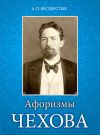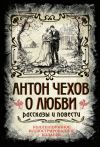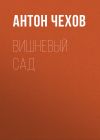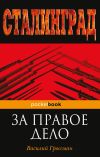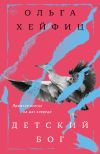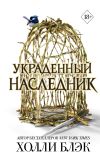Текст книги "Проблемы коммуникации у Чехова"
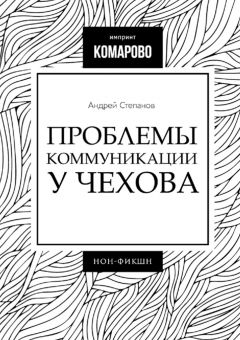
Автор книги: Андрей Степанов
Жанр: Языкознание, Наука и Образование
Возрастные ограничения: +16
сообщить о неприемлемом содержимом
Текущая страница: 27 (всего у книги 27 страниц)
Сухих И. Н. Проблемы поэтики А. П. Чехова. Л.: ЛГУ, 1989. 180 с.
Сухих И. Н. Повторяющиеся мотивы в творчестве Чехова // Чеховиана: Чехов в культуре XX века. М.: Наука, 1993. С. 26—32.
Тарасов Е. Ф. К построению теории речевой коммуникации // Сорокин Ю. А., Тарасов Е. Ф., Шахнарович А. М. Теоретические и прикладные проблемы речевого общения. М.: Наука, 1979. С. 5—147.
Тодоров Цв. Поэтика // Структурализм – «за» и «против». М.: Прогресс, 1975. С. 37—113.
Тодоров Цв. Понятие литературы // Семиотика. М.: Радуга, 1983. С. 355—369.
Толстая Е. Поэтика раздражения. Чехов в конце 1880-х – начале 1890-х годов. М.: Радикс, 1994. 398 с.
Толстой С. Л. Очерки былого. 4 изд. Тула: Приокское книжное издательство, 1975. 469 с.
Требник. Издание Свято-Троицкой Сергиевой Лавры, 1992.
Турбин В. Н. К феноменологии литературных и риторических жанров у А. П. Чехова // Проблемы поэтики и истории литературы. Сборник статей. Саранск: Мордовский гос. ун-т, 1973. С. 204—217.
Тынянов Ю. Н. Поэтика. История литературы. Кино. М.: Наука, 1977. 574 с.
Тюпа В. И. Художественность чеховского рассказа. М.: Высшая школа, 1989. 135 с.
Тюпа В. И. Нарратология как аналитика повествовательного дискурса («Архиерей» А. П. Чехова). Тверь: Тверской гос. ун-т, 2001. 58 с.
Уваров М. С. Архитектоника исповедального слова. СПб.: Алетейя, 1998. 243 с.
Утехин И. Очерки коммунального быта. М.: ОГИ, 2000. 248 с.
Федосюк М. Ю. «Стиль» ссоры // Русская речь. 1993. №5. С. 14—19.
Федосюк М. Ю. Комплексные жанры разговорной речи: «утешение», «убеждение» и «уговоры» // Русская разговорная речь как явление городской культуры. Екатеринбург: Арго, 1996. С. 73—94.
Федосюк М. Ю. Нерешенные вопросы теории речевых жанров // Вопросы языкознания. 1997. №5. С. 102—120.
Флоренский П. Имена. Харьков: Фолио; М.: АСТ, 2000. 439 с.
Хьелл Л., Зиглер Д. Теории личности (Основные положения, исследования и применение). СПб.: Питер, 1997. 608 с.
Холл К. С., Линдсей Г. Теории личности. М.: КСП+, 1997. 719 с.
Цилевич Л. М. Сюжет чеховского рассказа. Рига: Звайгзне, 1976. 237 с.
Цилевич Л. М. Стиль чеховского рассказа. Даугавпилс: Даугавписский педагогический ин-т, 1994. 246 с.
Цицерон. Оратор // Цицерон. Три трактата об ораторском искусстве М.: Наука, 1972. С. 253—384.
А. П. Чехов в воспоминаниях современников. М.: Художественная литература, 1986. 735 с.
Чудаков А. П. Поэтика Чехова. М.: Наука, 1971. 290 с.
Чудаков А. П. Мир Чехова: Возникновение и утверждение. М.: Советский писатель, 1986. 384 с.
Чудаков А. П. Единство видения: письма Чехова и его проза // Динамическая поэтика: от замысла к воплощению. / Отв. ред. З. С. Паперный, Э. А. Полоцкая. М.: Наука, 1990. С. 220—244.
Шалюгин Г. А. Рассказ «Архиерей» // Чеховские чтения в Ялте: Чехов в Ялте. М.: Наука, 1983. С. 37—34.
Шестов Л. Творчество из ничего // А. П. Чехов: pro et contra. Творчество А. П. Чехова в русской мысли конца XIX – нач. XX в.: Антология. / Сост., предисл., общ. ред. И. Н. Сухих. СПб.: РХГИ, 2002. С. 566—598.
Шестов Л. Апофеоз беспочвенности: опыт адогматического мышления. Л.: ЛГУ, 1991. 216 с.
Шмид В. Проза как поэзия: Статьи о повествовании в русской литературе СПб.: Академический проект, 1994. 241 с.
Шмелева Е. Я., Шмелев А. Д. Русский анекдот: текст и речевой жанр. М.: Языки славянской культуры, 2002. 143 с.
Шмелева Т. В. Речевой жанр: возможности описания и использования в преподавании языка // Russistik. Русистика. №2. Берлин, 1990. С. 20—32.
Шмелева Т. В. Речевой жанр: опыт общефилологического осмысления // Collegium. 1995. №1—2. С. 57—65.
Шмелева Т. В. Модель речевого жанра // Жанры речи: Сборник научных статей. Саратов: ГосУНЦ «Колледж», 1997. Вып. 1. С. 88—98.
Щеглов Ю. К. Молодой человек в дряхлеющем мире (Чехов: «Ионыч») // Жолковский А. К., Щеглов Ю. К. Мир автора и структура текста. Tenafly, N.J.: Hermitage, 1986. С. 21—52.
Щербенок А. В. Рассказ Чехова «Архиерей»: постструктуралистская перспектива смысла // Молодые исследователи Чехова. / Отв. ред. В. Б. Катаев. М.: МГУ, 1998. Вып. 3. С. 113—120.
Щербенок А. В. «Страх» Чехова и «Ужас» Набокова // Wiener Slawistischer Almanach. Bd. 44. 1999. C. 5—22.
Щербенок А. В. История литературы между историей и теорией: история как литература и литература как история // НЛО. №59. 2003. С. 158—170.
Эйхенбаум Б. М. О прозе: Сборник статей. Л.: Советский писатель, 1969. 504 с.
Якобсон Р. О. Лингвистика и поэтика // Структурализм – «за» и «против». М.: Прогресс, 1975. С. 193—230.
Якубинский Л. П. О диалогической речи // Якубинский Л. П. Избранные работы: Язык и его функционирование. М.: Наука, 1986. С. 17—58.
Ярмаркина Г. М. Жанр просьбы в неофициальном общении: риторический аспект // Жанры речи: Сборник научных статей. Саратов: ГосУНЦ «Колледж», 2002. Вып. 3. С. 262—268.
Anton P. Čechov – Philosophische und Religiöse Dimensionen im Leben und im Werk. Vorträge des Zweiten Internationalen Čechov-Symposiums. Badenweiler, 20 – 24 Oktober 1994. / Herausgegeben von Vladimir B. Kataev, Rolf-Dieter Kluge, Regine Nohejl. München: Sagner. 1997. (Die Welt der Slaven. Sammelbände – Сборники. / Herausgegeben von Peter Rehder (München) und Igor Smirnov (Konstanz). Band 1). XXI, 641 S.
Baehr, Stephen L. The Locomotive and the Giant: Power in Chekhov’s «Anna on the Neck» // Slavic and East European Journal. V. 39. №1. 1995. P. 29—37.
Berlo D. K. The Process of Communication. N.Y.: Holt, Rinehart and Winston. 1960. 318 p.
Derrida, Jacques. Signature Event Context // Derrida, Jacques. Margins of Philosophy. / Tr. Alan Bass. N.Y. – L.: Harvester Wheatsheaf, 1982. P. 307—330.
Evdokimova, Svetlana. Work and Words in «Uncle Vanja» // Anton P. Čechov – Philosophische und Religiöse Dimensionen im Leben und im Werk. München, 1997. P. 119—126.
Flath, Carol. Writing about Nothing: Chekhov’s «Ariadna» and Narcissistic Narrator // Slavic and East European Journal. V. 77. N 2. April 1999. P. 223—239.
Fowler, Alastair. Kinds of Literature. An Introduction to the Theory of Genres and Modes. Oxford: Clarendon, 1982. 357 p.
Freud, Sigmund. Screen Memories // Standard Edition of the Complete Psychological Works of Sigmund Freud. / Ed. James Strachey. L.: Hogarth Press. 1962. V. 3. P. 303—322.
Frye, Northrop. Anatomy of Criticism: Four Essays. Princeton, N.J.: Princeton University Press, 1957. 282 p.
Hall, Edward T. The Hidden Dimension. N.Y.: Anchor, 1969. 217 p.
Hymes, Dell. Foundations in Sociolinguistics: An Ethnographic Approach. Philadelphia: University of Pennsylvania Press, 1974. 248 p.
Jackson R. L. Концовка рассказа «Тоска» – ирония или пафос? // Russian Literature. XL. 1996. P. 355—362.
Jędrzejkiewicz, Anna. Opowiadania Antoniego Czechowa – Studia nad porozumiewaniem się ludzi. Warszawa: Studia Rossica. 2000. (Instytut Rusycystiki Uniwersytetu Warszawskiego, Studia Rossica IX). 268 с.
Lasswell H. D. The Structure and Function of Communication in Society // The Communication of Ideas. / Ed. L. Bryson. N.Y.: Harper and Brothers, 1948. P. 37—51.
Leech, Geoffrey N. Principles of Pragmatics. L. – N.Y.: Longman, 1983. 250 p.
Lindheim, Ralph. Chekhov’s Major Themes // Chekhov Companion. / Ed. by Toby W. Clyman. Westport, Conn. – London: Greenwood Press, 1985. P. 55—70.
Maddi S. R. Personality theories: A comparative analysis. 5th ed. Chicago: Dorsey Press, 1989. 749 p.
Malinowski B. The Problem of Meaning in Primitive Languages // Ogden C. K., Richards J. A. The Meaning of Meaning: A Study of the Influence of Language upon Thought and of the Science of Symbolism. 2nd ed., rev. N.Y. – L.: Routledge & Kegan Paul, 1927. P. 296—336.
Multiple Goals in Discourse. / Ed. Karen Tracy, Nicholas Coupland. Clevedon, England: Multilingual Matters, 1990. 170 p.
Nilsson, Nils Åke. Studies in Čekhov’s Narrative Technique («The Steppe» and «The Bishop»). Stockholm: Stockholm University Press, 1968. (Acta Universitatis Stockholmiensis. Stockholm Slavic Studies 2). 110 p.
Pitcher, Нarvey J. The Chekhov Play: a New Interpretation. Leicester, UK: Chatto & Windus, 1973. 224 p.
Pervukhina, Natalia. Anton Chekhov: The Sense and the Nonsense. N.Y.: Legas, 1993. (Literary criticism series; 4). 200 p.
Peuranen, Erkki. Акакий Акакиевич Башмачкин и Святой Акакий // Studia Slavica Finlandensia. Tomus 1. Helsinki: Institute for Russian and East European Studies. 1984. C. 123—140.
Riffaterre, Michael. Semiotics of Poetry. Bloomington and L.: Indiana University Press, 1978. 213 p.
Smith, Virginia Llewellyn. Anton Chekhov and the Lady with the Dog. L. – N.Y.: Oxford University Press, 1973. 271 p.
Todorov, Tzvetan. Les genres du discours. Paris: Ed. du Seuil, 1978. 309 p.
Vick C. F. Levels of Individuation in Semantic Structures // Research Designs in General Semantics. / Ed. by K. G. Johnson. N.Y.: Gordon and Breach.1974. P. 41—45.
Waszink, Paul. Double Connotation in Čeсhov’s «At Christmas» // Russian Literature. XXVIII. 1990. P. 245—276.
Zholkovsky, Alexander. Themes and Texts. Toward a Poetics of Expressiveness. Ithaca and London: Cornell University Press, 1984. 300 p.
Zubarev, Vera. A System Approach to Literature: Mythopoetics of Chekhov’s Four Major Plays. Westport, Conn. – London: Greenwood Press, 1997. 184 p.
Summary
This book puts into practice Mikhail Bakhtin’s theory of speech genres in the study of literary texts. Bakhtin’s project was conceived not only for «metalinguistics» or speech theory, but also as an instrument for literary analysis. In the past twenty years, however, the theory of speech genres has been developed mainly in the field of linguistics, where the principal object of study is not literary language. Drawing upon the work of linguists, this Bakhtinian critical study has therefore been undertaken with the goal of «returning» speech theory to the study of literature. A new typology of speech genres is presented that seeks to unite Bakhtin’s theory with Roman Jakobson’s model of communication and the functions of language.
This thesis contends that authors understand the nature of communication in different ways, a specificity that can be extended to literary movements or even to whole cultural epochs. My hypothesis has been examined in relation to Chekhov’s understanding of communication, as it is revealed in his texts, together with that of some of his predecessors in classical Russian literature (Turgenev, Tolstoy, and Dostoevsky).
Studies of communication in Chekhov have, in general, been limited to single stories and plays, or to a small sample of his work. This study examines over three-hundred and fifty Chekhov texts, including all the major plays and short stories, as well as many of the early comic stories (rarely discussed by critics). The theoretical framework of speech genres has been employed to study Chekhov’s complete oeuvre.
Since the first performances of his plays by the Moscow Art Theatre, nearly a century ago, critics have pondered misunderstandings and «breakdowns of communication» between Chekhov’s characters. A critical consensus has arisen which argues that: «Chekhov’s characters do not want to understand each other. They are good people but their lack of good will makes their world perish – such is the message of his works.» On the contrary, this study attempts to show that breakdowns of communication in Chekhov’s works are not willed by the characters, but rather due to something irreducible and unavoidable in their attempts to communicate.
I believe that human communication lies at the centre of Chekhov’s writings – one could even say that it becomes a field of study in its own right. Of course, Chekhov was not the first European writer to describe the difficulties people encounter in their conversations with one another. But in the pre-Chekhovian literary tradition «failures of communication» appear to be neither so absolute nor indeed fatal. Antagonists and rivals can usually comprehend rival positions, dialogues are rarely absurd or devoid of logic, random obstacles do not interrupt the flow of communication: in short, people are able to listen to and understand each other, even when they are in conflict. If breakdowns of communication appear in the text they tend to play the role of devices that characterize individuals; that is, they signify something more than simply a communicative failure. For example, they might demonstrate a character trait, an outlook on the world, or serve to advance the plot. Furthermore, differences of opinion are not rooted in language usage or the speech situation. Unsuccessful communication is therefore instrumental, never a goal of the text in itself. In my reading, however, Chekhov’s events are communicative events and since his texts display a variety of communicative acts, a model of communication that encompasses all of these variants needs to be worked out.
Chapter 1 offers a new interpretation of Bakhtin’s theory of speech genres, one that takes into account contemporary pragmatics and speech act theory. My classification of speech genres comprises five kinds of discourse: informative, affective, imperative, expressive and phatic. This typology determines the organizational structure of the book: in chapters 2—6 each of these classes is studied in relation to genres such as information (informatsiia), dispute (spor), sermon (propoved’), demand / request / plea (pros’ba), command (prikaz), complaint/lament (zhaloba), confession (ispoved’), and small talk (boltovnia). The description of these genres is not merely formalistic: in each case the analytical focus is on the kind of inter-subjective relations that underlie a particular genre. For instance, I argue that the category of law underlies the sermon, the category of power underlies a genre like command, and so forth.
My claim is that Chekhov’s texts are generated by transformations of everyday speech genres («primary» genres in Bakhtinian terms). Thus the comic effect of the early short stories stems from ironic transformations in which the hero’s utterances and ideological position at the beginning of the story stand in complete contrast to his words at the end. Such a structure is also valid for later and more serious works, although transformations in these texts are smoother and less abrupt. In all cases a void is demonstrated in the hero’s personality: he is able to speak only in ready-made speech patterns and is unaware of the contradictions in his world-view they reveal.
Chapter 2 attempts to show how Chekhov questions the absolute value of informative discourse; that is, the presentation of facts and their understanding within an ideological framework. Even when the characters transmit useful information, it often turns out to be somehow out of place and time, such that the speaker is discredited ethically or aesthetically. Similarly, scientific speech often transforms into ideologically authoritarian discourse, discouraging dissent from the other. Chekhov is skeptical about the possibility of attaining consistent, complete and harmonious knowledge. Such an attitude originates not only in the individual features of his heroes, but also in the very nature of linguistic communication. Any sign, verbal or iconic, may lose its meaning, and the reason for this lies not in any ill will on the part of the speaker, but through the reiteration and recurrence of the sign itself. An «ageing» sign effaces itself and hinders a true understanding of the world.
Chekhov’s early stories are full of quid pro quo. In his later works this device is transformed into the motif of cognitive error. The reliability of information is always dubious in Chekhov’s world and signs may be misinterpreted at any moment. The possibilities of error may depend upon the ambiguity of perception, or upon mistakes originating in a character’s emotional overreaction, or upon an ideological misunderstanding. Characters have desires that work in different directions: two speakers may have different things in mind when apprehending the same referent. Since a character may misinterpret the world, referential illusions are created, which nonetheless influence their perception of reality. Chekhov’s narrative technique, in which the author refrains from evaluating the actions and sayings of his protagonists, underscores their errors both in their interpretations of the world but also relating to the apparent unreliability of informative discourse.
Similar transformations can take place during disputes, another genre of informative discourse. In the midst of an argument a character may suddenly shift into expressive or rhetorical modes; as a consequence the dispute does not lead to shared understanding, and this may in turn be ruinous for the characters involved.
Affective or rhetorical genres, the object of study in chapter 3, are often as complex as informative ones. The speaker frequently begins by expressing feelings that seem to work against his intended message. Eloquence is constantly undermined, sometimes because it stems from a character’s urge to speak, or sometimes as an outright falsehood. Chekhov questions rhetoric throughout his works, but at the same time he understands that rhetoric is an irreducible component of speech, even in occasions of attempted sincerity. There is no «pure» discourse, and only gestures beyond language, expressed in situations of human misfortune and sorrow, can escape rhetoric. All attempts to transmit a subjective truth, for example to preach or sermonize, tend to end in failure. None of Chekhov’s heroes is given the right, intellectually or morally, to undisputable authoritative discourse.
In Chekhov’s works social questions have a communicative dimension. These are expressed in the imperative speech genres studied in chapter 4. One of the most widespread imperative genres in Chekhov’s world is demand/request/plea. This is evidence of the fact that characters are interdependent. Having said that, most demands encounter a refusal, or are left unanswered, or collide with counter demands, or turn out to be unrealizable. In depicting social relations, therefore, Chekhov has recourse to speech genres such as demand / request and command in order to study power relations. SoSocial hierarchies and role behavior are compared with «anthropological» man. For example, characters in positions of authority are depicted as old and decrepit. Command, as well as submission, is ritualistic: people command without power and comply with orders that have not been given. Consequently, these acts are emptied of meaningful content. One character may appear socially as a commander or subordinate, but simultaneously as everyone’s equal in physical appearance. Chekhov shows how a society based on power relations is not viable but leads to conflict and logical contradictions. For Chekhov, humans are equals in terms of their physical being and thus equality is a priori, not an ideal to be attained, as it is in the works of Tolstoy or Dostoevsky.
Chapter 5 examines expressive discourses. The most important instances are confessions and complaints/laments, which have traditionally been imbued with the qualities of sincerity and immediacy, since they occur in cases of direct contact between people – «heart to heart» so to speak. But in Chekhov’s world they tend to be devoid of these qualities. Self-criticism, for instance, is usually accompanied by condemnation of the other. Church confessionals are presented as a ritual creating a false feeling of guilt, which is then projected onto the outside world. Thus confession appears as a discourse, not of inner freedom, quite the contrary. Chekhov’s strategy works to question and complicate our understanding of confessional discourse. Similarly, a candid speech may be addressed to the wrong addressee, and thereby undermined by the confused emotional atmosphere. A confessing hero may feel relief, not through sincere repentance, but as a result of self-indulgence. Cognitive illusions and self-deceptions lessen the value of confessional discourses.
Chapter 6 is devoted to the workings of phatic speech genres. Phatic discourse is the opposite of expressive, but in Chekhov, it too takes on a paradoxical character. Often there is a fusion of informative and phatic speech. What seems to be an urge to inform may, in fact, be simply a striving to continue speaking while little or no information is being transmitted. A potentially serious discussion can turn into small talk or babble (boltovnia). But even small talk, which linguists consider effective as a means of maintaining and regulating human relations, loses its function in Chekhov’s works: the Chekhovian character does not master phatic discourse, often with unexpected consequences. For Chekhov everyday life is full of ritualized speech forms and these can disturb and torment his characters. Very often a protagonist is faced with two, equally undesirable, alternatives: to take part in the ritual, which means deceiving himself and others, or to avoid all contact with others, which may result in being excluded from society.
Chapter 6 explores the concept of «contact’ in the primary (Jakobsonian) meaning of the word: that is, lack of disturbance in the communication channel. It appears that contact is in no way guaranteed in the conversations of his characters. Dialogues in Chekhov are arguably much closer to real, spoken language than the works of his Russian predecessors. His dialogues are never finished and a remark has no silent dixi tagged to it, as it should have when viewed from the perspective of Bakhtin’s theory of finalization of utterances. Communication might be interrupted at any moment or disturbed by a number of obstacles: for example, characters may become tongue-tied, or they may simply parrot parasitic or repetitious words. «Irritable factors» enter the communication channel – the characters appear doomed to live in a world full of noise rather than effective communication (unlike their counterparts in the classical realist Russian novel). This «noise» intrudes upon the speakers, dulls them or disturbs them. However, the factors that create this noise are not linked to the author’s ideology. They exist by themselves as part of the communication situation. Noise, especially natural «noises» (for example, birdsong or the rustle of leaves) may also play a positive role, working as an alternative to failed linguistic communication. If a character listens to sounds from nature, it often means that he or she is coming closer to a level of sensitivity aspired to by the author.
Despite all of these communicative obstacles, we may still find «harmonious» episodes in Chekhov’s late stories. Commentators often describe these moments as «miracles» of understanding between characters. Two such stories, «Na sviatkakh» (At Christmas) and «Arkhierei» (The Bishop) are discussed in the end of the book. A close reading reveals that contact is established primarily through emotional response, based largely upon the simple presence of another person. For this kind of contact no language is needed, but it generally occurs only between people united by a common sorrow or disaster and it will not usually last very long. The paradox of a story like «The Bishop» is that the dichotomy between contact and estrangement has no relevance for the depiction of the relationship between characters.
Examined from the perspective of problematic communication Chekhov’s texts are full of paradoxes. Dialogue appears never to achieve its goal: disputes do not follow the logical schema of argumentation; information may be discredited in one way or another; the reactions to a character’s speech are often not the ones intended or desired; pleas and requests may end in refusal or misunderstanding; orders seem to be unfounded; a character is unable to adequately express his or her feelings; even a most elementary contact is not guaranteed by the dialogue. Speech genres used by the characters undergo radical transformations, working as a mechanism that generates the text itself. Thus, the Chekhovian text gives a «realistic» picture of the world, however grotesque or paradoxical it may appear: on the one hand communication is very close to conventionally realistic «non-literary» conversation, while on the other hand insurmountable obstacles hinder true communication. Such a reading of Chekhov may help us to understand why his works have had so great an appeal to twentieth-century readers: an age, or so it has been suggested, when every «common language» has been lost. Furthermore, it may help to account for the existence of diametrically opposed interpretations of his texts. If reading Chekhov’s texts is conceived as a process of translation and «putting in order», then it may be the case that they are resistant to this kind of interpretation. They are inherently ambivalent and paradoxical in every atom of their communicative structure, and what happens in them cannot be evaluated unequivocally. In the works of Chekhov we are shown the limits of human language and the complexity of communication: each interpretation of these works must work within the very medium of those dense linguistic structures and therefore remain incomplete.
Правообладателям!
Это произведение, предположительно, находится в статусе 'public domain'. Если это не так и размещение материала нарушает чьи-либо права, то сообщите нам об этом.



